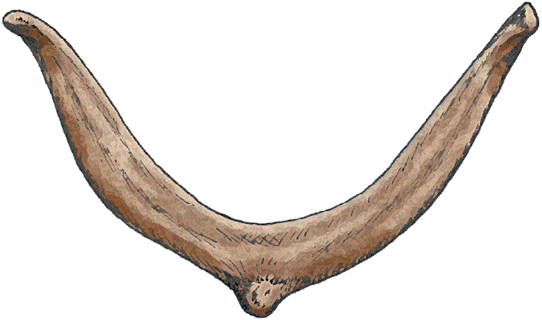|

|
|
Important Bones |
Scientists have long
grouped together similar animals for many purposes.
Historically, it has been relatively easy to determine if an animal
was an amphibian, reptile, mammal, fish or bird. They have long
known that some dinosaur skeletons were remarkably similar to those of
birds, but still it was relatively easy to tell them apart, but the
discovery of so many feathered dinosaurs is making it increasingly
difficult to distinguish them from one another..
Lizards and crocodiles have legs that stick out from the body then
angle down to the ground, but dinosaurs stood on legs that went
straight down to the ground. Many of the dinosaurs were bipedal
(walked on two hind legs), as do birds. The bipedal dinosaurs
had forearms, but in birds the forearms evolved into wings. It
is now know that some dinosaur forearms can be classified as wings.
Reptiles are cold-blooded Many experts paleontologists
believe that the initial primary function of feathers on dinosaurs was
to provide insulation, meaning the feathers helped them to keep warm.
This suggests that those dinosaurs were warm-blooded, as are birds.
One of the features that distinguish modern day birds from
feathered dinosaurs is the mouth. Birds have beak and most dinosaurs
had teeth. However prehistoric birds also had teeth and
Erlikosaurus had a toothless beak, just like a bird. Experts
point out that one characteristic of birds is that they fly, but even
this is not always the case. Penguins and ostriches are two well
known examples of modern flightless birds.
Birds did have what were thought to be two bones unique unto them,
but recent discoveries have changed that. forcing
paleontologists to reevaluate many long-held beliefs. They now
realize that the relationship between dinosaurs and birds may
have been far closer than previously imagined. |
|
 |
|
Pygostyle |
|
Nomingia gobiensis
(see Brooding Dinosaurs) is an
oviraptorosaur discovered in Mongolia. It is unique in that the last
five vertebrae on its tail are fused together creating what is called
a "pygostyle." Pygostyles are found on only one other group of
animals - the birds. They are used to anchor the tail feathers.
This indicates that N. gobiensis had tail feathers too. |
|
 |
|
Furcula |
|
This is better known as the
"wishbone." The furcula is a bone long thought unique to modern
birds. It stretches across the chest and provides a strong
anchor for wing muscles. It was recently found on Suchomimus
(110-100 MYA) and Microraptor. One was even found on
"Sue," the Tyrannosaur rex now on display at the Field Museum in
Chicago. |
| As
it now stands, the most consistent distinction between modern day
birds and some of the prehistoric dinosaurs is the length of the tail.
Modern birds have comparatively short ones, an attribute that makes
them good flyers. But the distinction between birds and
feathered dinosaurs is becoming increasingly blurred. Some
experts want to reclassify at least some of the feather dinosaurs as
birds. If that happens it is going to be very difficult to
establish standards to determine which is which. |
|
|
|
|
|
|
|
|
Edugraphics.Net | Feenixx Publishing |
|
|
|
|
|
![]()